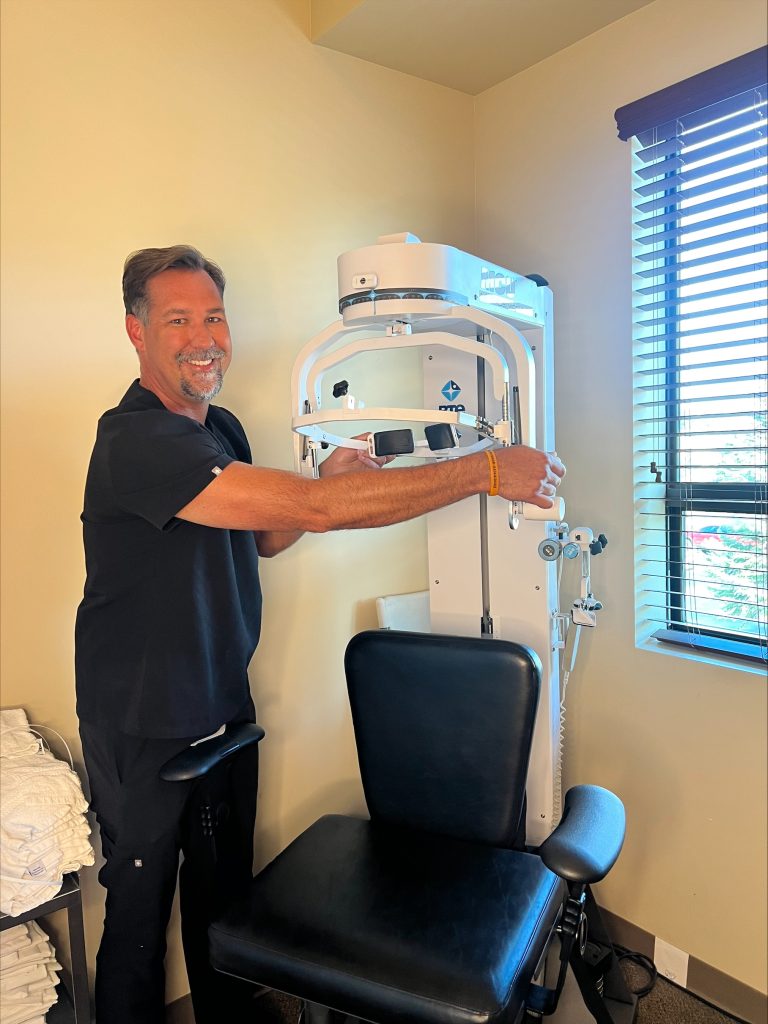
Bulletproof Your Personal Injury Case: Documentation, Compliance, and Care with MCU
Case Studies“For personal injury cases, it justifies functional loss and medical necessity. We always use the MCU for documentation purposes,” says Dr. Munderloh.
Munderloh Integrated Medical is the leading chiropractic clinic for personal injury care in the Flagstaff, Arizona area. For over 20 years, Dr. Munderloh has centered his personal injury program around documenting functional loss, motivating patient compliance, and providing evidence-based treatment. Dr. Timothy Munderloh shares how the MCU sets his clinic apart and provides lasting relief.
Documenting Functional Loss for Personal Injury
Documenting functional loss is a critical part of personal injury cases. This clinical data indicates the severity of the injury and supports the provider’s recommendation for treatment. When followed by a re-evaluation after treatment, this data should show exactly how the patient has progressed and whether they need additional treatment.
To support these clinical recommendations in a personal injury case, the evaluation should include objective measurement. This is where Dr. Munderloh’s MCU program stands out.
Using the MCU’s evaluation protocol, Dr. Munderloh measures both strength and range of motion of the cervical spine and generates a report showing the patient’s deficits. “For personal injury cases, it justifies functional loss and medical necessity. We always use the MCU for documentation purposes,” says Dr. Munderloh.
Dr. Munderloh gets referrals from other providers who have heard about the MCU – typically, pain management groups and personal injury attorneys. He says the MCU’s objective evaluation and documentation are what attract these personal injury referrals.
“They think it’s amazing to see it and they’re impressed we have this technology in our clinic,” says Dr. Munderloh.

Unlike many rehab scenarios, personal injury involves what’s known as “sincerity of effort.” At times, a patient may not be exerting their best effort during an evaluation. If this happens, the MCU’s data capture software will recognize abnormal levels of effort. “You can’t fake out the machine,” says Dr. Munderloh.
For those who are interested, here’s how that works: the patient’s effort is indicated by the test’s coefficient of variation. During an isometric strength test, the patient performs their best push three times in a row. Someone giving their best effort every time will have a very low coefficient of variation across the three pushes. A high number means the level of effort was inconsistent, and the clinician should remind the patient to give their best effort. The patient cannot see the screen during testing, so the clinician only needs to cue them when to start.
Motivating Patient Compliance
Patient compliance is key for any successful treatment, but especially for complex issues like neck pain. With the MCU, Dr. Munderloh says patients are fully committed to completing the full course of treatment.
With a new patient, Dr. Munderloh starts by showing blinded progress reports from past clients. He also educates them on the importance of strengthening the neck. When clients understand how the treatment benefits them, they’re more compliant, which ultimately leads to long-term relief.
When patients get their initial evaluation report, it’s usually the first time they’ve seen their condition visualized in a concrete way. The report shows exactly where the weakness or imbalance is, and a target range for where their strength and range of motion should be after completing the program.
For people suffering from chronic neck pain, the reports are a powerful visualization and motivator. “People like to know what their problem is, and the reports are really good for that,” says Dr. Munderloh.

Strengthening the Neck for Lasting Relief
Dr. Munderloh treats a wide range of patients at his practice. He recommends the MCU for any patient with any cervical condition, from chronic neck pain to post-fusion recovery.
“We can isolate muscles specifically in the neck and strengthen those,” he says. Rather than other practices that might use methods like elastic bands, Dr. Munderloh takes a more targeted treatment approach by strengthening the neck muscles in isolation. With the MCU, Munderloh can identify the specific side, angle, and movement for improvement – for example a left 45* flexion that is 30% below the healthy strength range for that patient.

“Patients are more compliant, and it’s significantly easier to use and more accurate than JTECHs,” says Dr. Munderloh. Traditional hand-held tools lack the MCU’s ability to pinpoint weakness and asymmetry, compare that with normative data on both strength and ROM, document functional improvements, and facilitate individually dosed exercise sessions.
Dr. Munderloh says this technology absolutely sets his clinic above others. The MCU keeps patients engaged and provides a higher standard of care. “If someone increases their strength 10-20%, that can completely eliminate your neck pain, and in our experience, the results have been long lasting,” says Dr. Munderloh.
Post-cervical Fusion Recovery
Dr. Munderloh recalls one particularly memorable recovery with a patient who had undergone cervical fusion surgery. One year after the surgery, the patient showed muscular degeneration above the fused segments. Manipulation wasn’t an option, so he recommended gradual strengthening with the MCU. The results were amazing.
“We tripled his strength in 20 visits and completely eliminated his neck pain.”

The built-in Neck Disability Index provided a powerful visual motivator as the pain rating decreased with each visit. Dr. Munderloh says the MCU produced “impressive results in a relatively short amount of time.”
Generating Referrals
With results like this, word quickly got around in the local community. Dr. Munderloh began getting referrals for the MCU by word of mouth. He’d send MCU progress reports to the other doctors and attorneys working on his clients’ personal injury cases, which sparked their curiosity. He would then host tours of his clinic where he’d explain how the MCU works along with other modalities for well-rounded care.
The high compliance rate and objective proof of progress make his clinic the preferred choice for personal injury referrals. He says, “Nobody else is able to really quantify people’s strength in this area.”
The ability to document progress with objective data make his personal injury reports virtually indisputable. “It’s based on the numbers and how they feel,” he says.
Objective Evaluation + Evidence-based Treatment
Whether for injury recovery or chronic neck pain, patients who come to Dr. Munderloh are ready for help. He frequently sees people who have tried “everything else.” Combining the MCU with other modalities like cervical traction, adjustment, and nutrition, he is able to provide lasting relief. The MCU’s objective evaluation reports identify specific areas for improvement, which guide the treatment progression. Exercise sessions apply evidence-based strengthening for a personalized experience for every patient.
Ready to see what the MCU can do for your practice? Contact us for a quote on a new or Certified Pre-Owned MCU.





